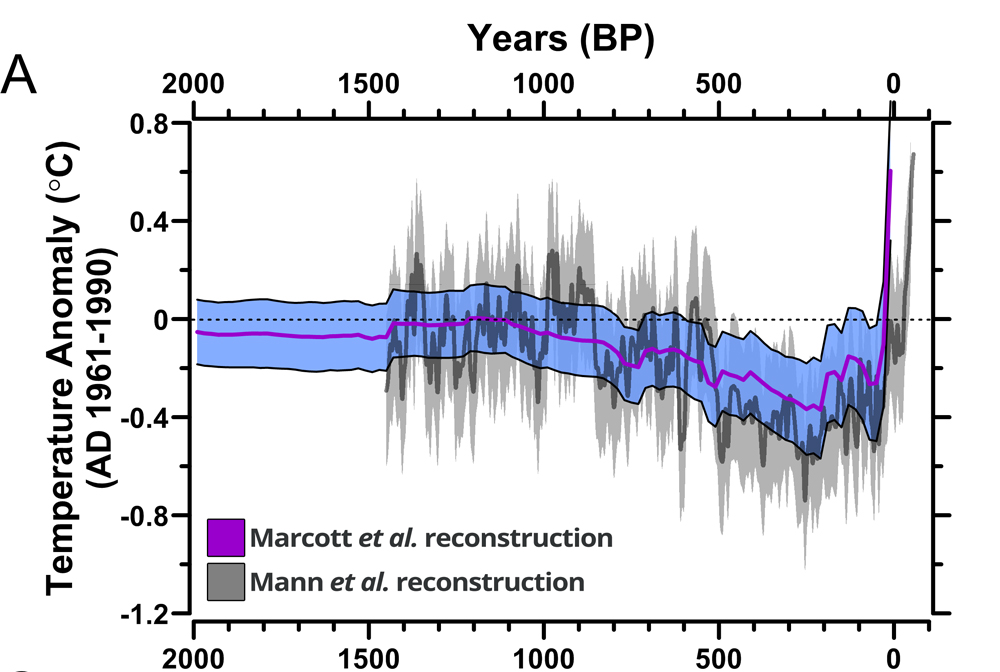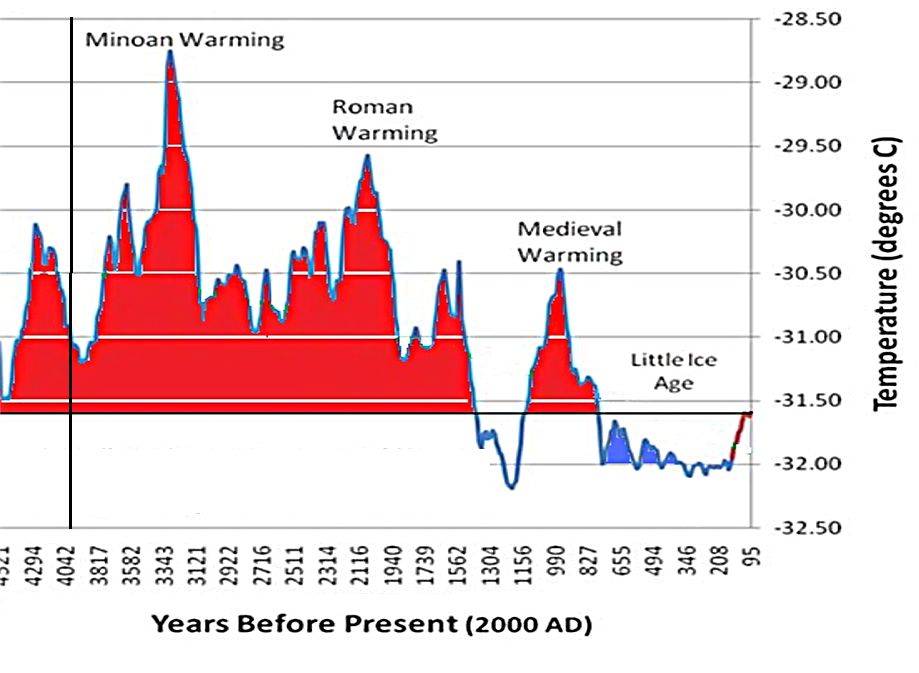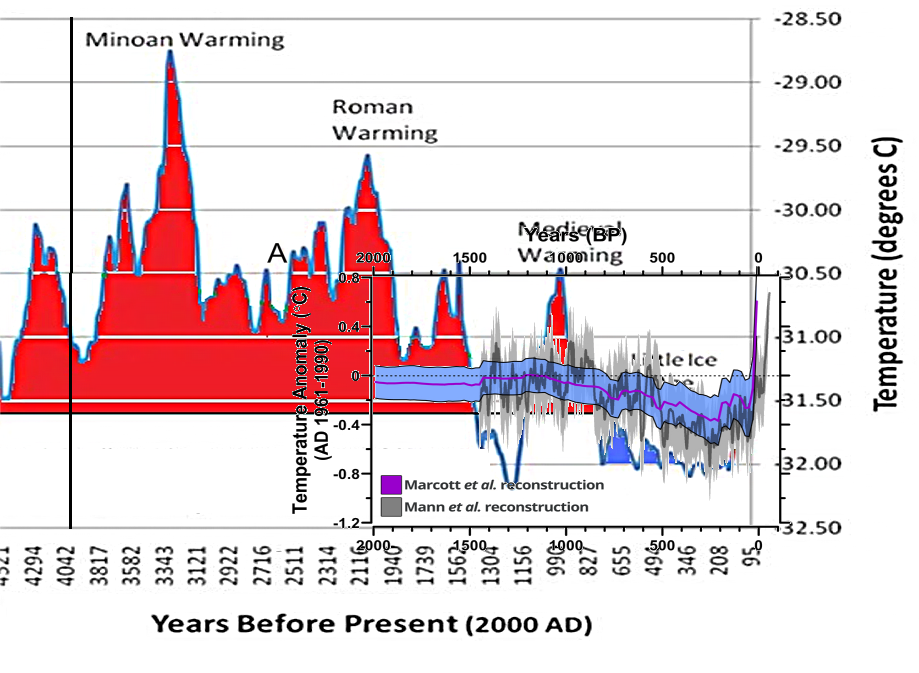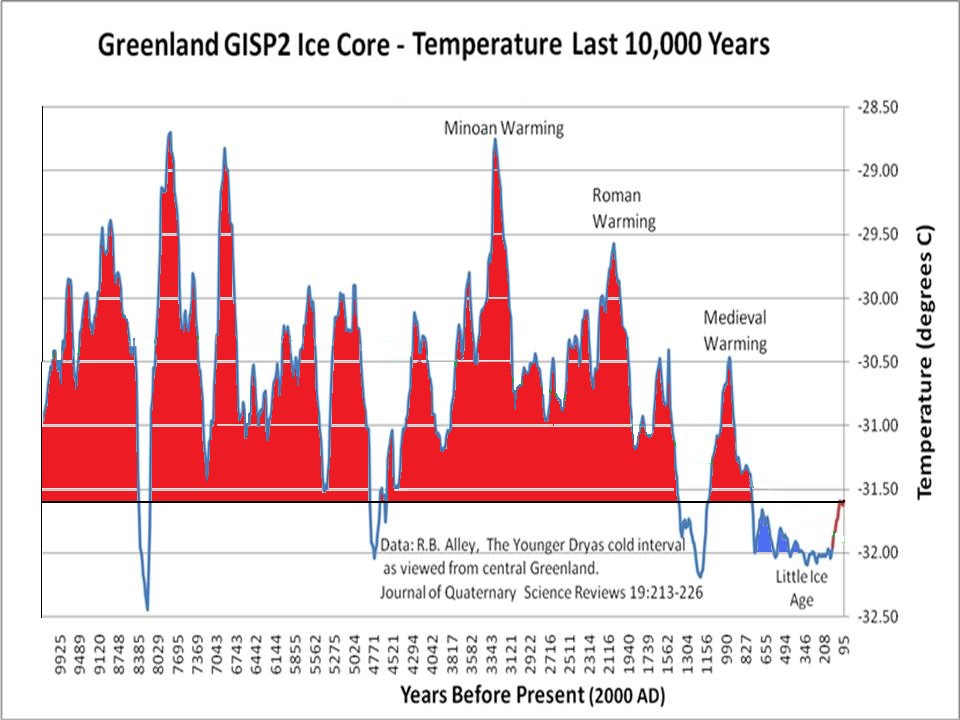Okay, let's have a look at the claim. First this graph from the publication:Surface temperature reconstructions of the past 1500 years suggest that recent warming is unprecedented in that time.
Seems reasonable when you look at that data, right? But let us examine a well known reconstruction from GISP2 ice core data in Greenland. Here's a section from Dr. Richard Alley's reconstruction:
Now here is a simple scaling of the Marcott et al graph to get an approximate match for the temperature and time scales:
Note that this is just a simple visual comparison, with a rough match of the data for time and temperature scales - it isn't intended to be anything else.
The full un-cropped Alley GISP2 plot can be seen below:
In my overlay above, the Marcott et al graph full time scale on the x axis is 2000 years, and its temperature full scale on the y axis is two degrees C. The scaled overlay to the Alley GISP2 plot is a reasonably close match to the GISP2 plot scale units. The centerlines don't match, but they can't with this sort of comparison.
The idea here is simply to compare magnitudes of the data on the same time scale.
Clearly, the GISP2 data has greater magnitudes in the past 1500 years, and at longer time scales, the GISP2 temperature reconstruction dwarfs the magnitude of the Marcott et al temperature reconstruction. Dr. Don Easterbrook has a good synopsis of GISP 2 temperature reconstruction magnitude on WUWT here.
This simple visual comparison suggests that their "unprecedented" claim for the 1500 years BP is unlikely to hold up when examined against other reconstructions. As they say in the big leagues, more study is needed.
Marcott et al alludes to the warmer temperatures of the past in this paragraph:
Our results indicate that global mean temperature for the decade 2000 - 2009 (34) has not yet exceeded the warmest temperatures of the early Holocene (5000 to 10,000 yr B.P.). These temperatures are, however, warmer than 82% of the Holocene distribution as represented by the Standard5×5 stack, or 72% after making plausible corrections for inherent smoothing of the high frequencies in the stack (6) (Fig. 3). In contrast, the decadal mean global temperature of the early 20th century (1900 - 1909) was cooler than >95% of the Holocene distribution under both the Standard5×5 and high-frequency corrected scenarios.Perhaps this weekend when I have more time, either I can do a proper plot of the data in a similar fashion to see how well they match when plotted side-by-side in the 1500 year time frame. Unfortunately I have other work to do today, so I can't at the moment, and I'm traveling again tomorrow. Posting will be light.







Comment: For more information about the actual ice core data that shows the historic periods of Earth's cooling and warming, read also: Magnitute and rate of climate changes.